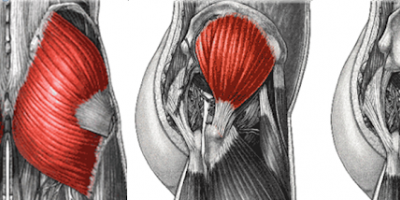The Gluteal Muscles

What are they?
The Gluteal muscles are the muscles that sit around the back and sides of your pelvis. They are referred to as the buttocks. There are three gluteal muscles – glute maximus, glute medius and glute minimus. They Originate at the pelvis and the insert onto the ball of the femur (thigh bone) . They are powerful muscles that stabilize the pelvis, lift the leg back, out to the side and rotate the femur internally and externally.
The role of the gluteal muscles
1.Gluteal muscles are important for proper pelvic alignment, propulsion during running which in turn can prevent knee or ankle injuries during lifting and running exercises.
- Gluteal muscles assist with maintaining balance when we stand on one leg and are essential to reduce falls risk especially in our senior population.
- Strong glutes also help to support the lower back during lifting motions and reduce pressure on the spine. Having strong gluteal muscles will allow you to properly execute many common lower limb exercises like squats.
Why are glutes often weak?
Our modern lifestyles have caused us to stay sitting for many hours at at time and as a result our glutes are inactive. Previous injuries to the lumbar spine may result in compression or irritation of the sciatic nerve which can reduce the innervation of optimal muscle fibres of the gluteals which causes poor muscle fibre recruitment. Previous injury and altered biomechanics due to poor flexibility and muscle imbalance can also cause poor gluteal recruitment.
Here are some of the best exercises that help to strengthen the glutes:
1. Squat
Step 1: Stand with your feet hip-width apart with your toes pointed slightly outward. Your arms should be hanging loose by your side. Then engage your core muscles and push out your chest slightly by pulling your shoulder blades towards each other
Step 2: Bend your knees and push your butt and your hips out and down behind you as if you were sitting into a chair. Keep your weight on your heels and make sure your knees are over your toes, but not beyond them.
Step 3: Come down until your thighs are below parallel to the ground. Make an effort to keep your knees externally rotated (don’t let them fall inward). As you lower down, make sure to keep your torso upright
Step 4: Straighten your legs and squeeze your butt to come back up
the key points:
- Keep your weight on your heels.
- Keep your torso upright with your shoulders pulled back.
- Your feet should be hip-width apart with your toes slightly pointing outward.
- Your knees should be over (but not beyond) your toes.
- Your butt, back, and core muscles should be engaged the entire time.
- On the downward portion of the squat, aim to go below parallel.
When doing the clam exercise, keep your upper body static by engaging your core muscles to maintain a neutral spine. Rotate your hip to lift the knee and breathe out. Keep your core tight to avoid rolling back and, as you breathe in, lower your leg back to the starting position.
- Single Leg Bridge https://www.youtube.com/watch?v=cAePrMWq-y4
Place one leg straight and bend the other leg with foot flat on floor or mat. Place arms down on mat to each side of hips. Raise body by extending hip of bent leg, keeping extended leg and hip straight. Return to original position by lowering body with extended leg and hip straight.

